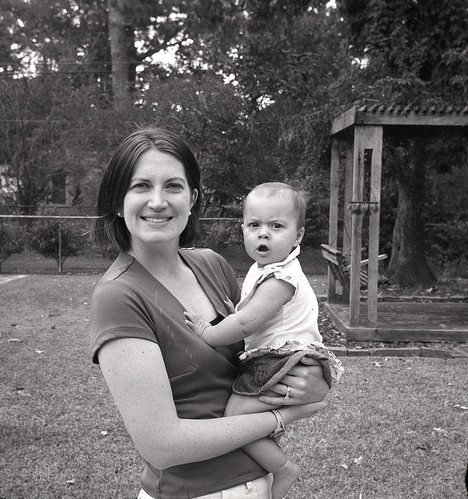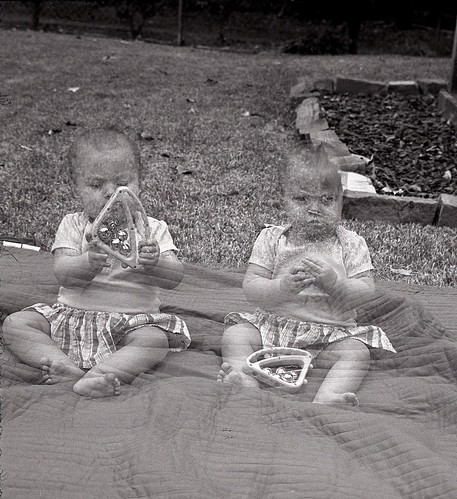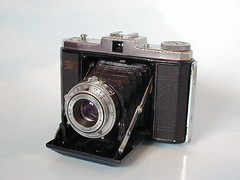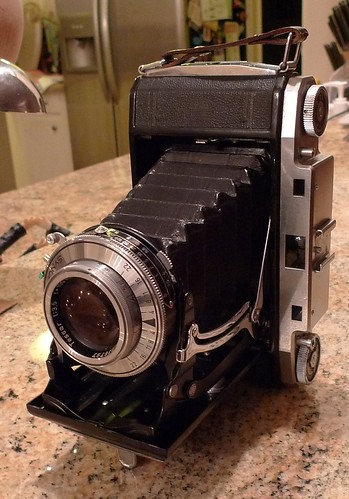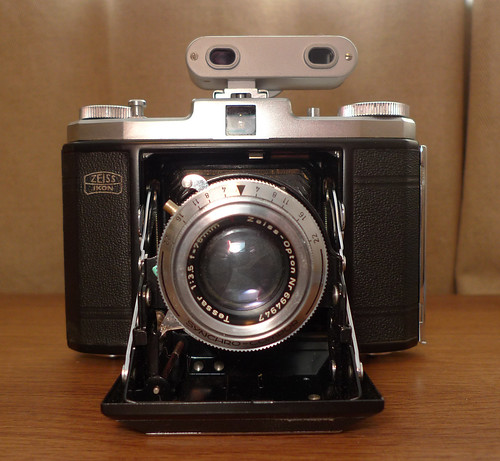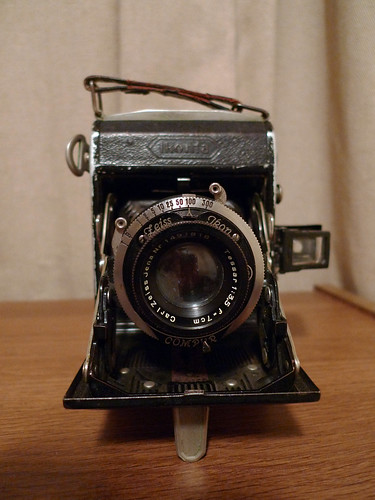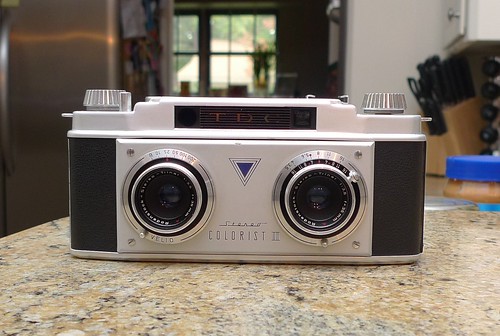Shutter: It has an unmarked shutter, which features shutter speeds of B, T, 2, 5, 10, 25, 50, 100, 250. It is rather uncommon for a shutter not to be separately marked. Common shutters were Vario, Klio , Prontor, and Compur. The earlier Compur shutter had the same shutter speeds as this Speedex.
Lens: The 85mm f/4.5 Agfa Anastigmat lens is also a bit of a mystery. Agfa marketed the Agnar (3 element), Apotar (better 3 element) and Solinar (4 element). I've seen a very similar looking Isolette on eBay with a 85mm f/4.5 Solinar lens. Cheaper leneses were normally attached to cheaper shutters, so it can't be the bottom level lens. However, "Anastigmat" is normally a label I see attached to three element lenses. (he agrees: What the Heck is an Anastigmat). My guess is that is like an Apotar.
Operation: Body shutter, which I like. No double exposure prevention which I like. No depth of field scale, which I find especially annoying on a scale focus camera. Like most folders, you have to look through the little red window when advancing film.
Condition and Repairs: The bellows, like all Agfa folders, were full of pinhole leaks. Some of these are hard to see without a very powerful flashlight. I first attempted to patch the bellows with some RTV black silicone. This is a good solution for a bellows with a couple of holes, but these bellows were littered with pinholes, so I decided to replace the bellows. I bought the new bellows from Workmans Photography. The slow speeds (2, 5) stick, but I don't plan on doing anything about it.The lens has a few internal spots, so I'd give a 7.5/10 rating.
Camera (with the old bellows):

Results:
The results are quite positive, but it can be difficult to guess distances. It's not too bad at f/16 due to the wide depth of field, but I wouldn't want to try at f/4.5 except at infiniti. I expected the camera to perform well at f/8-f/16, but I didn't really have an opportunity for a test a f/4.5, so until next roll.
At f/8. No flash sync, so I manually tripped the flash, with the shutter open. Notice the black in the lower right. That's because of my B+ job in replacing the bellows. That piece stuck into the frame.It is on all photos, just cropped out of others.
At f/16, 6.5 feet:
Double exposure at: f/22 Double exposures are easy, because all you have to do is recock the shutter. Camera manufacturer's later added mechanisms that prevents double exposure. This was for the benefit of most consumers at the time, but it prevents experimentation today.

